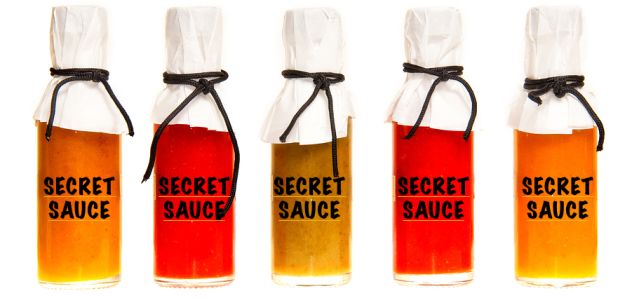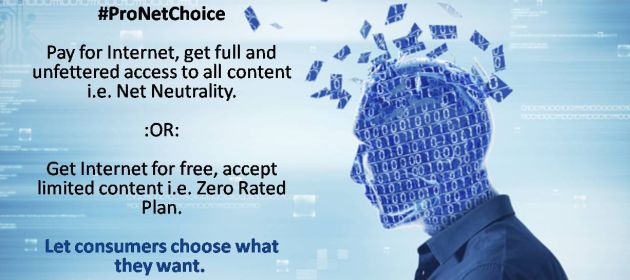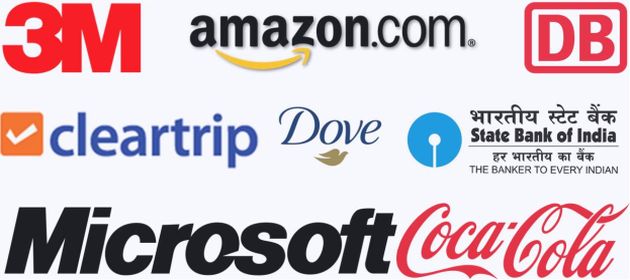They say every product or service must have a secret sauce.
Some startups take the secrecy part of this advice to the extreme by going into stealth mode until they launch.
Some others point to today’s open world of startup events, mentoring sessions, Twitter and TED talks and question if it’s even possible to keep anything secret.
Based on my deep-dive into a couple of products, I’m convinced that it’s possible to hide your secret sauce.
In this post, I’ll describe my experiences and share three ways by which you can hide your secret sauce, too.
#1. SQUARE
 By launching a card reader attached to a smartphone and accompanying POS software, SQUARE expanded the market for debit and credit cards to merchants who hitherto accepted only cash. In the early days, it appeared that Square was successful because it obviated the need for merchants to buy costly point-of-sale terminals to accept card payments. Later on, co-founder Jack Dorsey talked up the company’s success to the deep insights delivered by the Square POS software to merchants.
By launching a card reader attached to a smartphone and accompanying POS software, SQUARE expanded the market for debit and credit cards to merchants who hitherto accepted only cash. In the early days, it appeared that Square was successful because it obviated the need for merchants to buy costly point-of-sale terminals to accept card payments. Later on, co-founder Jack Dorsey talked up the company’s success to the deep insights delivered by the Square POS software to merchants.
Without belitling these critical success factors, I believe that Square took off for a different reason:
Square was the first product / service that allowed merchants to accept accept card payments without getting a merchant account.
For the uninitiated, merchants who wish to accept credit card must have a Merchant Account, which is essentially a line of credit extended by an acquirer bank.
A Merchant Account is issued by a bank, which is called Acquirer Bank in this context. Before deciding whether to issue a Merchant Bank to a certain merchant, the Acquirer Bank verifies
- the Merchant’s ID
- the Merchant’s creditworthiness
- that the Merchant won’t go bankrupt (or vanish into thin air)
- that the Merchant can and will deliver what she’s selling
- that the Merchant is around when fund reversals may happen 30-60-90 days from date of transaction.
As you can see, that’s a lot of risk that the acquirer bank needs to take in a credit card transaction. This is called Acquirer Risk.
Acquirer Risk is the main reason why banks are extremely circumspect about issuing merchant accounts.
Micro and small businesses find it hard to qualify for merchant accounts from banks because of their high risk profiles. As a result, they cannot accept credit cards.
(Hat tip to Jelle Van Schaick, Marketing Manager, Intergiro for posting the above details in his Finextra article entitled What Is Merchant Acquiring? The Ultimate Guide.)
Against this backdrop, Square used its well-funded status to get a merchant account for itself from leading acquirer banks. It then issued sub-merchant accounts to high risk merchants with minimum fuss (and took over the acquirer risk from the banks). As a result, micro and small businesses, which never would have got a merchant account from a bank directly, were now able to accept credit card payments – without having to “toil hard to get this privilege”, as an investor in a Square-clone startup writes in MEDIUM.
With this innovative model, Square created a win-win situation for everyone: Merchants who left business on the table before because they couldn’t accept cards were now able to win those sales. Banks who earned nothing from such merchants’ cash transactions in the past now started getting incremental merchant fees without taking on the incremental acquirer risk. Square became a modern day payments legend.
'Acquirer takes risk of merchant going insolvent.' SQUARE mitigates this risk. Many clones don't even know about it. http://t.co/CNTmcgFO2V
— GTM360 (@GTM360) October 9, 2015
Update: I just chanced upon this article on GigaOm that explains SQUARE’s USP:
One of the payment back end capabilities that was revolutionary behind Square was the extension of the merchant aggregation model for credit card acceptance from the internet (which Paypal has used so well) to the real world through an elegant point of sale solution.
The merchant aggregation model is explained in detail by Digital Transactions.
#2. GPSVoice
This app helps parents track their children via GPS. I’ve speculated at How To Remove Features And Increase A Product’s Appeal on how it manages to do that without draining the battery, which is the bugbear of all location based apps. Suffice to say that the app achieves the feat by actually removing a few features.
#3. PayTM
PayTM is a mobile wallet prefunded by debit or credit cards (or bank accounts) of users who can use the wallet balance to pay digitally at participating merchants’ sites without undergoing the friction of entering credit card information for every transaction on merchant websites. Tired of failed payments caused by RBI’s two factor authentication (2FA) mandated for digital payments, consumers lapped up the frictionless alternative offered PayTM quickly. The initial success of PayTM inspired a lot of clones. However, with 100 million users, PayTM is clearly the biggest mobile wallet player in India. Its leadership position is often attributed to early mover advantage, massive funding and superior execution.
Without undermining these factors, I attribute PayTM’s popularity to a major difference in how it operates compared to other mobile wallets. PayTM does not require the user to preload funds in the wallet. It tops up the wallet on the fly without user intervention. As a result, although it’s called a “prepaid mobile wallet”, users don’t need to make one transaction to load money and another transaction to make a payment. This is in sharp contrast with other prepaid mobile wallets that bump off people with low wallet balances with a message to load enough money first and then come back and attempt the payment.
To illustrate this with an example, let’s say my PayTM wallet balance is INR 700 and I want to pay a bill of INR 1000. My transaction would fail on all other mobile wallets because of insufficient balance. I’d have to quit the bill payment transaction, go prefund my wallet with INR 300 (being the difference between the payable amount of INR 1000 and the wallet balance of INR 700), and then come back and reinitiate the bill payment transaction. What a pain!
In sharp contrast, PayTM lets me go ahead without any error message. It first uses up the wallet balance of INR 700, then seamlessly takes me to my funding source, asks me to fund the deficit of INR 300, and completes the payment in a single pass. No error message. No need to retrace any steps. The journey is very frictionless and likely required a very sophisticated implementation of two-phase commit feature in database technology.
As illustrated by the above examples, you can hide our secret sauce:
- In a new business model that empowers people to do something they couldn’t do before
- By tweaking the product architecture such that it solves the Achilles Heel of the entire product category
- By reimagining the customer journey in order to deliver superior CX.
While this list is by no means exhaustive, it’s varied enough to show how it’s possible to have the secret sauce cake and hide it too.


